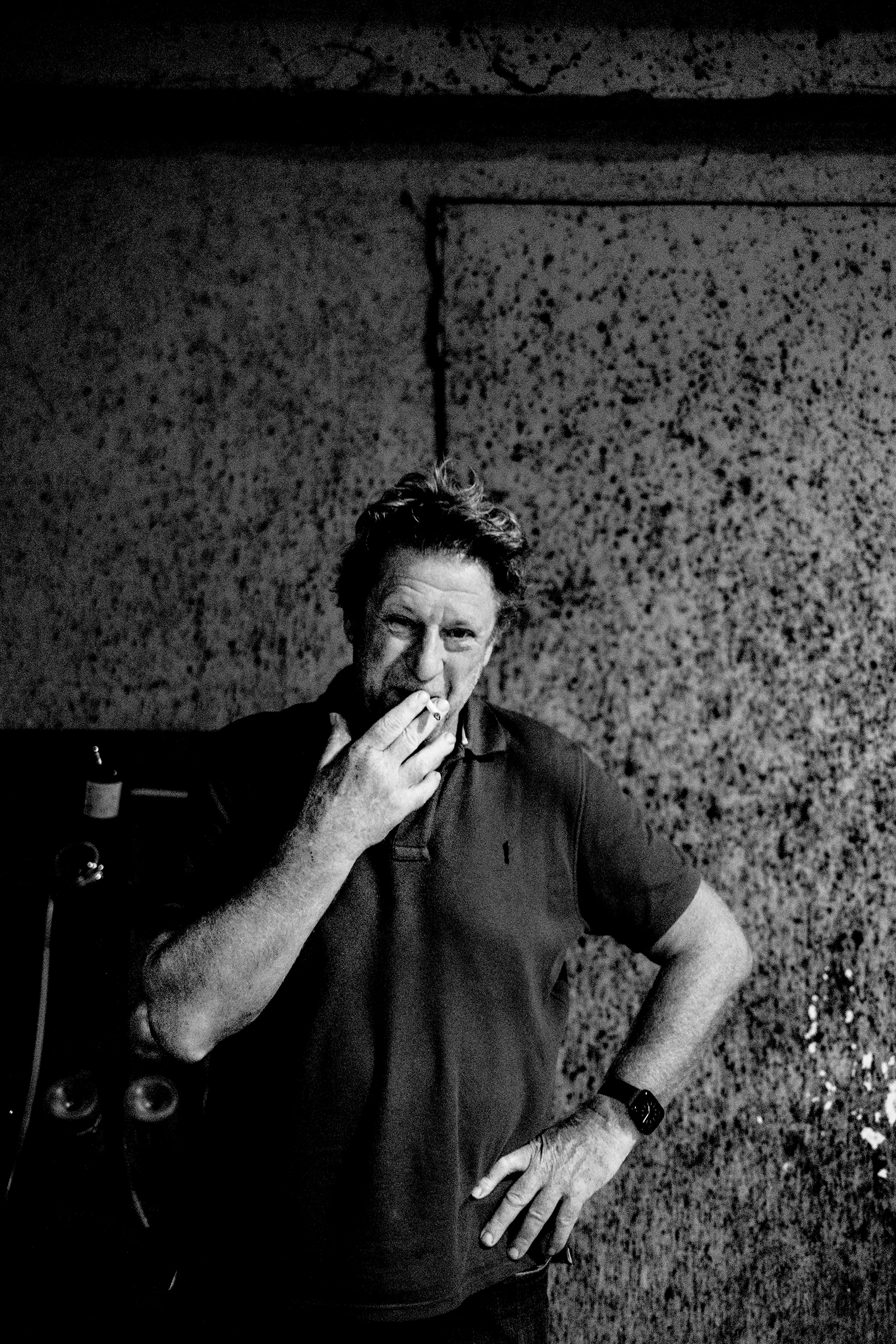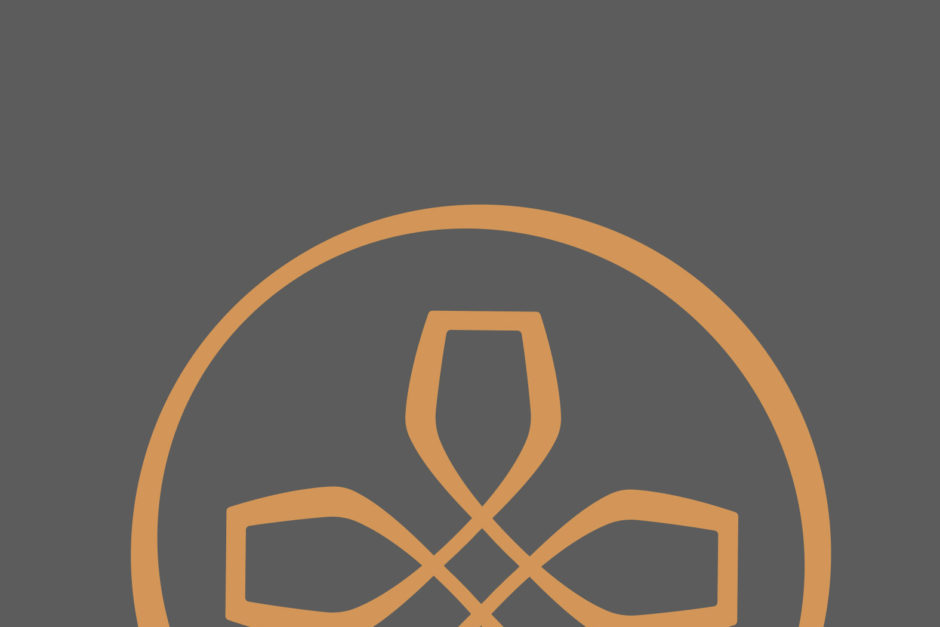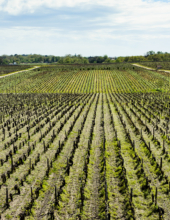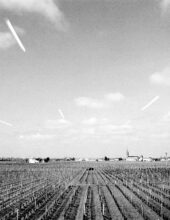07th Dec 2023
"I have the impression that I’m on the move. I have a horizon that keeps shifting in front of me. But I want to keep going because I want to find out what is on the other side."
- Anselme Selosse
The Shifting Horizon
"I don’t consider myself a doctor who needs to find a remedy. I am more of an obstetrician or midwife bringing the wine into the world."
Anselme Selosse likes communicating with imagery. “I like to share what I’m thinking in images,” he said, preferring to transmit feelings about what he’s doing rather than list specifics. He explains his wines and winemaking with engaging ease, with no dogma or systemic formulas to pontificate about, instead sharing vivid analogies to communicate his aims, weaving in how important listening, learning, and maintaining flexibility is for him to adapt to constantly changing circumstances.
He quickly points out that his task is not to control vinous outcomes but to deftly guide natural viticulture and winemaking processes in a positive direction.
Birthing imagery crept into his recounting of the over-abundant 2023 vintage. He equated the volume of the Pinot Noir and the impact on the vines for subsequent years to a woman having not just twins or triplets but quadruplets. “Naturally, she is going to be very tired,” he said, adding that the vine vitality after 2023 may be depleted for some years ahead. “We had a lot of surprises and difficulties this year,” he remarked, “resulting in both deception and satisfaction. Pinot Noir is the deception, and Chardonnay is the satisfaction.”
Anselme’s vines may fare better than others since he observed and responded early to the potential abundance he saw before flowering.
“In May, we removed 30% before flowering to limit the production,” he said. “Why do this principally before the flowering? It’s because the plant remembers the number of buds and flowers that were pollinated. So later in its processes, the plant sends resources to the buds it remembers.”
This early practice ultimately resulted in a smaller number of bunches with larger grapes.
“In July, we did another green harvest. And took out an additional 10%,” Selosse said. “When we did the green harvest after flowering, instead of small grapes, we got much larger ones.”
Though grape size wasn’t his focus. To him, the pulp just provides sugar, acid, and water.
“To me, the most important part is the pellicule,” explained Selosse, “the envelope around the pulp with the essential oils, salt minerals, and polyphenols. That is important.”

"There is a terroir for the wine and a terroir for the vinification."
We entered the cellar amid a full flush of fermentation, the air heavy with natural warmth and humidity from the barrels and laden with lusty, sweet aromas of fermenting fruit and yeast. The cellar had a spiritual vibe, in one sense quite monastic with ordered rows of barrels running through the center and lining the walls, and in another sense more pagan with the ceiling and walls airily padded with an organic canape of soft, fluffy-looking dark moss born from years and years of barrel fermentation evaporation. It reminded me of Angkor Wat, where stone temples are forever embraced by the jungle, gripped by strangler figs that transform the structures into a double helix of man and nature. This is Anselme’s cellar. Intertwining man, nature, and time into its own biotope, the aromas and surfaces are laced with a unique, organic DNA from years of fermentations and inhabited by an animal kingdom of spiders, bats, and even tiny frogs. It feels very textural, complex, and dimensional, like his wines.
“There is a terroir for the wine and a terroir for the vinification,” Anselme explains. “Listen. You can hear the vibrations of the wines if you are quiet. I love fermentation. It is something that is used in all cultures and in different ways.”
Chez Selosse, respiration is a key aspect of the fermentation process, which is why he uses a lot of new oak each year. “The wines need to expand and contract like a lung,” he explains. “Older barrels do not breathe as well as new barrels, which is why we replace 25% of the barrels each year.” The fermentation also factors in the vitality of the grapes that go in each age of barrel. Grapes from the older vines are fermented in new barrels with greater respiration capacity, and grapes from the younger vines go into the older barrels.

Time is another imperative. “Any fermented product can only do what it does at its own time,” according to Anselme. “It needs seasons and patience.”
The wines remain in barrel undisturbed until after Easter when the vin clair are tasted. They are then bottled for the second fermentation just before the full moon closest to the summer solstice. In 2024, this will be around July 14. For Selosse, this is a time when the moon brings the most vitality and dynamism to the natural processes of second fermentation. As he put it, this is a “re-education” of the wine as it takes on new life in the bottle. Aligning this change with these auspicious astrological forces adds vital energy to the wine. “This is not a belief,” Anselme points out. “It is what I have observed by experience.”
As we moved on to taste through five current releases, Anselme shared that he thinks tasting wine is an intimate thing. One should not try to compare one wine to another wine or try to find a specific thing in a wine.
“Whether you like or dislike is not the point,” he said. “You should respect each wine for the individual personality of the wine. When you meet a person, you don’t size up someone by one specific thing and compare them to others; you appreciate someone in their entirety, as a whole personality.” Well noted.
Selosse will produce about 75,000 bottles from the 2023 vintage, an amount below the maximum possible, which is rare. “I love this job,” Anselme said. “But the downside is that you can’t prepare. It is always different. Nature is free to do what it pleases.”
Reverting to imagery to explain where he is with the current vintage, he said, “I have the impression that I’m on the move. I have a horizon that keeps shifting in front of me. But I want to keep going because I want to find out what is on the other side. That is what is going on in my head now.”
"Whether you like or dislike is not the point."
-
Article and reviews by Sarah Mayo
Photography by Johan Berglund

PRODUCERS IN THIS ARTICLE
> Show all wines sorted by scoreMore articles

Bordeaux 2023 Vintage Report and Reviews from Barrel
09th May 2024
649 tasting notes

Cathiard Vineyard New Releases
02nd May 2024
3 tasting notes

Bordeaux 2023 Preliminary Vintage Report and Reviews from Barrel
29th Apr 2024
56 tasting notes

2021 Bordeaux in Bottle and A Modest Proposal
24th Apr 2024
599 tasting notes
Show all articles